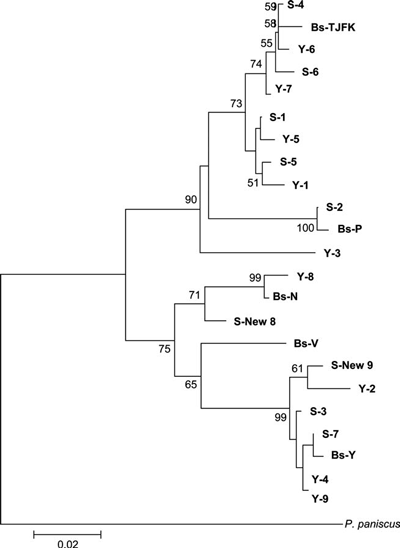HOME » Publications » Terrestrial Nest-Building by Wild Chimpanzees (Pan troglodytes): Implications for the Tree-to-Ground Sleep Transition in Early Hominins
Terrestrial Nest-Building by Wild Chimpanzees (Pan troglodytes): Implications for the Tree-to-Ground Sleep Transition in Early Hominins
American Journal Of Physical Anthropology,Volume 148, Issue 3, pages 351–361 , doi: 10.1002/ajpa.22056
Abstract
Nest-building is a great ape universal and arboreal nesting in chimpanzees and bonobos suggests that the common ancestor of Pan and Homo also nested in trees. It has been proposed that arboreal nest-building remained the prevailing pattern until Homo erectus, a fully terrestrial biped, emerged. We investigated the unusual occurrence of ground-nesting in chimpanzees (Pan troglodytes), which may inform on factors influencing the tree-to-ground sleep transition in the hominin lineage. We used a novel genetic approach to examine ground-nesting in unhabituated chimpanzees at Seringbara in the Nimba Mountains, Guinea. Previous research showed that ground-nesting at Seringbara was not ecologically determined. Here, we tested a possible mate-guarding function of ground-nesting by analyzing DNA from shed hairs collected from ground nests and tree nests found in close proximity. We examined whether or not ground-nesting was a group-level behavioral pattern and whether or not it occurred in more than one community. We used multiple genetic markers to identify sex and to examine variation in mitochondrial DNA control region (HV1, HV2) sequences. Ground-nesting was a male-biased behavior and males constructed more elaborate (“night”) nests than simple (“day”) nests on the ground. The mate-guarding hypothesis was not supported, as ground and associated tree nests were built either by maternally-related males or possibly by the same individuals. Ground-nesting was widespread and likely habitual in two communities. We suggest that terrestrial nest-building may have already occurred in arboreally-adapted early hominins before the emergence of H. erectus.
 Neighbor-joining tree of HV1 mtDNA variants found
in Seringbara (S) and neighboring communities of Bossou (Bs)
and Yeale´ (Y), adapted from Shimada et al. (2004). Pan paniscus
is used as out-group and bootstrap values above 50 are shown.
Variant Y4 and Y9 differ by 1 bp at nucleotide position 16538
(Shimada et al., 2004) outside the 293 bp region we analyzed
and therefore appear to overlap in this tree.
Neighbor-joining tree of HV1 mtDNA variants found
in Seringbara (S) and neighboring communities of Bossou (Bs)
and Yeale´ (Y), adapted from Shimada et al. (2004). Pan paniscus
is used as out-group and bootstrap values above 50 are shown.
Variant Y4 and Y9 differ by 1 bp at nucleotide position 16538
(Shimada et al., 2004) outside the 293 bp region we analyzed
and therefore appear to overlap in this tree.
Keywords
ground-nesting, molecular genetics, hair sample, sexing, mtDNA
Full Text
PDF Download Please refer to the terms of use before downloading.





